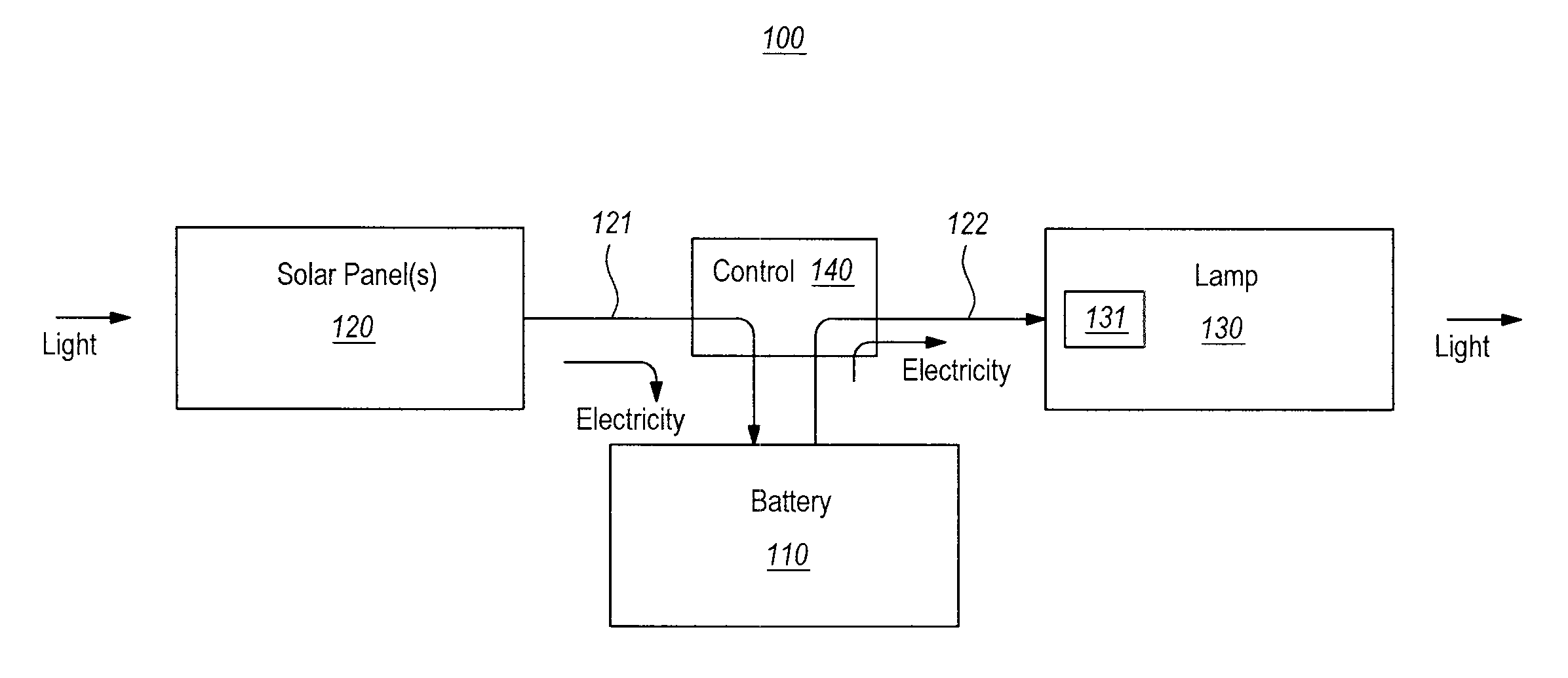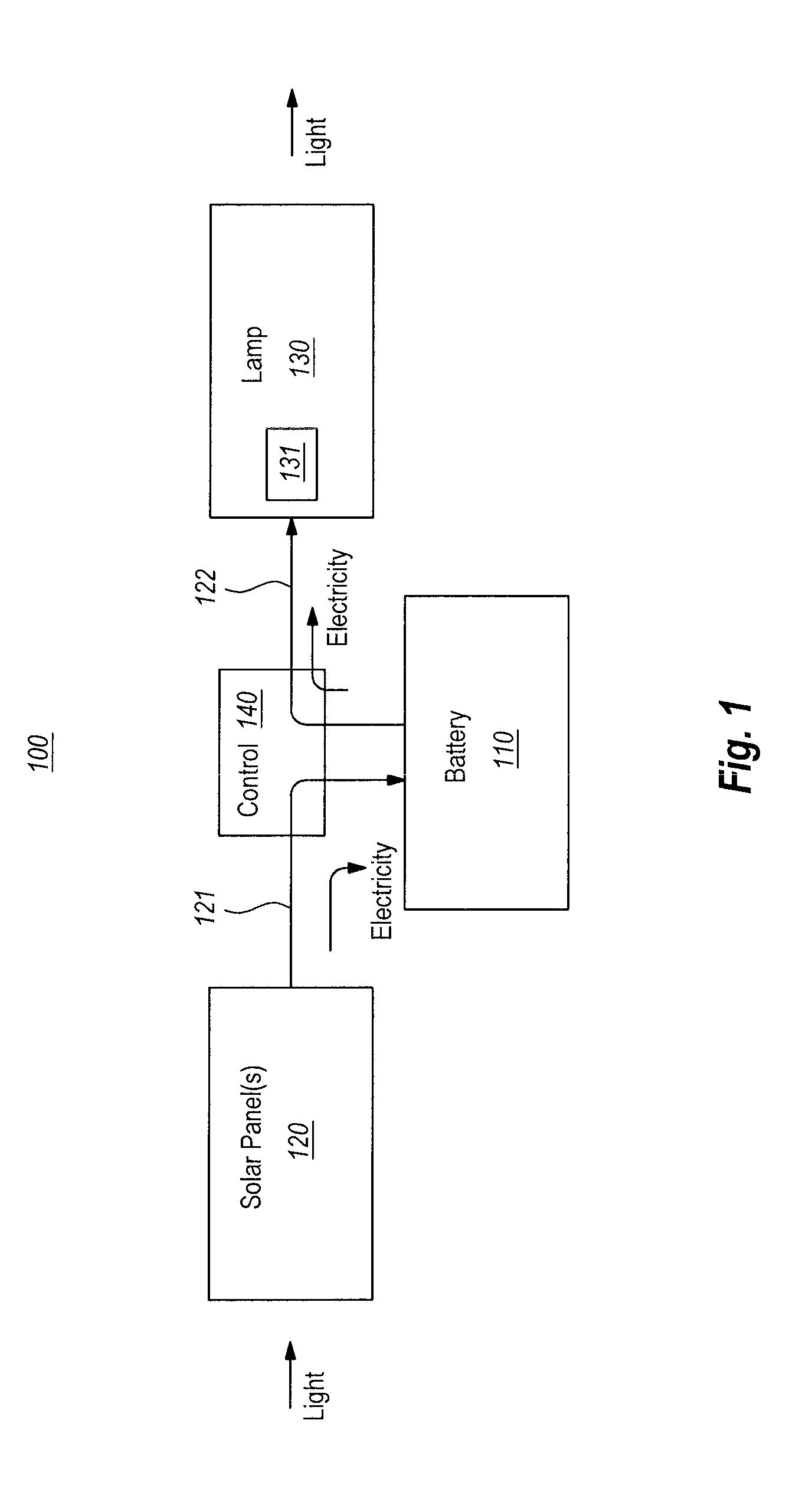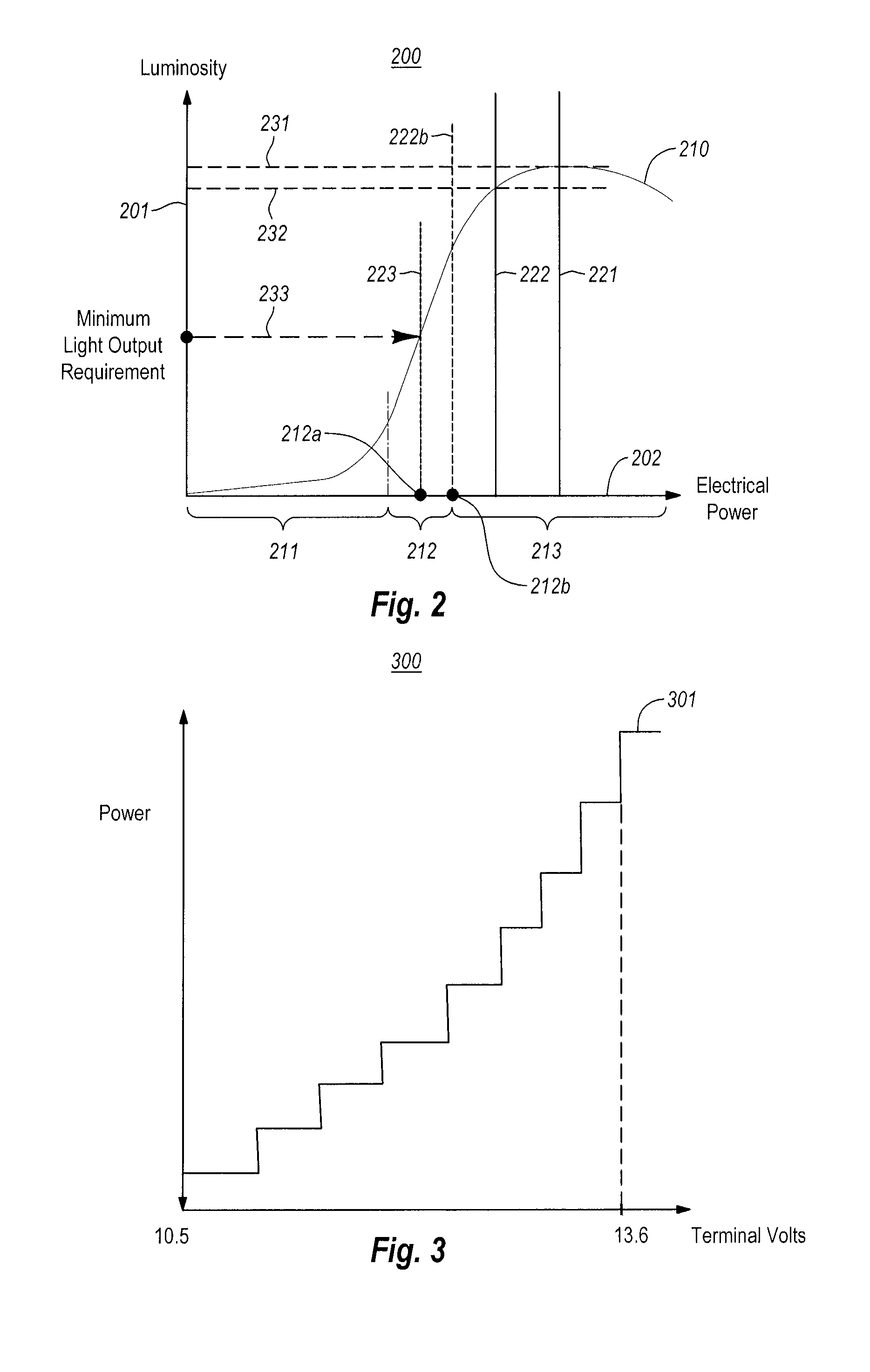Lamp powering technology
a technology of powering technology and street lamps, which is applied in the direction of electric variable regulation, process and machine control, instruments, etc., can solve the problems of not being able to sustain lighting for three continuous rainy days, and the street lamps that are arrayed with such solar powered street lamps are often left dark, so as to reduce the power consumption of the device, reduce the available energy, and reduce the effect of proportionate reduction in the luminosity of the lamp
- Summary
- Abstract
- Description
- Claims
- Application Information
AI Technical Summary
Benefits of technology
Problems solved by technology
Method used
Image
Examples
Embodiment Construction
[0012]The principles described herein related to a technology for powering a lamp that potentially includes a passive network of diodes and resistors. The lamp design further includes a system control unit (such as a control box) that allows for increased lighting stamina in a longer series of continuous rain days as compared to commercial lamps even for the same given solar panel and battery.
[0013]The lamp can be operated across the full range of the available stored energy in the battery. As the battery's stored energy decrease, the systems' power consumption is reduced and the system efficacy is increased, while still maintaining the lighting above the required brightness. In other words, the novel system can continuously (or step by step) improve efficacy as battery stored energy drains down.
[0014]Solar powered lamps use solar panels to charge batteries during sunny conditions (hereinafter referred to as “sunny days”) when significant numbers of sun-originated photons are incide...
PUM
 Login to view more
Login to view more Abstract
Description
Claims
Application Information
 Login to view more
Login to view more - R&D Engineer
- R&D Manager
- IP Professional
- Industry Leading Data Capabilities
- Powerful AI technology
- Patent DNA Extraction
Browse by: Latest US Patents, China's latest patents, Technical Efficacy Thesaurus, Application Domain, Technology Topic.
© 2024 PatSnap. All rights reserved.Legal|Privacy policy|Modern Slavery Act Transparency Statement|Sitemap



